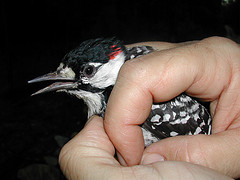Mitigation and Conservation Banking
By:
K Gregg ElliottTo many landowners, a threatened or endangered (T&E) species on their property is anathema because it can herald all kinds of state and federal limitations on use of their property. Ironically enough, with sufficient flexibility, private landowners with T&E species might be able to turn the tables and profit from those organisms. One way is by working with agencies with an interest in protecting or restoring habitat. This could conceivably give landowners an edge in competing for state state or federal grants funds for restoration, such as through the Partners for Fish & Wildlife Program.
Alternatively, it could mean creation of a mitigation or conservation “bank.” Both mitigation banks and conservation banks are large contiguous areas, owned by one or multiple landowners, where habitat is restored to meet statutory conservation requirements. A mitigation bank is a site that is restored and/or managed as wetland to meet the “no net loss” requirement of the Clean Water Act. Conservation banks are restored and/or managed to provide habitat for listed species under the Endangered Species Act.
Both types of banks sell credits at a price determined by the market to “project proponents” who have business proposals that will result in unavoidable impacts to listed species or habitats. The proponents then buy the credits from the bank to meet their statutory obligations. Federal regulations usually require that for each acre of wetlands or habitat destroyed by an approved project, a greater number of acres must be protected or restored, and maintained in perpetuity.
Conservation Banking 101
In Mississippi, The Nature Conservancy established the first coastal wetland mitigation bank in 1996. Their 1700-acre Old Fort Bayou Mitigation Bank includes ongoing management to remove nonnative invasive species, create erosion control features, and fill man-made ditches.
Wildlands, Inc. is a for-profit business that has established mitigation and conservation banks in California, the Pacific Northwest, and the Southeast. Jeff Matthews, Director of Sales & Marketing for Wildlands, says that their bank projects generally take three forms:
- buying land in fee to manage as a bank
- buying an easement to manage as a bank
- executing an agreement with a landowner to develop and profit-share a bank
Landowner Agreements for Mitigation or Conservation Banks
This third option is one that may be of interest to the Mississippi landowner. Land for a mitigation bank must, first and foremost, be suitable for its intended conservation purpose. Proximity to large protected areas such as national wildlife refuges, state parks, or state and federal forests, also boost a landowner’s prospects. Economies of scale dictate that a profitable, and ecologically effective, conservation bank must generally be at least 100 to 200 acres.
A landowner agreement results in a process whereby landowners work with Wildlands to develop a banking solution. Landowners put up the land by agreeing to a permanent mitigation easement. Wildlands provides the expertise, permitting, and credit sales. According to Mr. Mathews, “Typically, after expenses, Wildlands and the landowner split the profits 50/50.”
Habitats of high interest in Mississippi include longleaf pine as habitat for Red-cockaded Woodpeckers, plus a host of other listed species.
Safe Harbor agreements
If a mitigation or conservation bank is not possible, there is another program called “Safe Harbor” available to landowners with T&E species or habitat on their property. The Safe Harbor concept was originally developed by the Environmental Defense Fund in cooperation with the Fish and Wildlife Service. The Environmental Defense Fund describes Safe Harbor this way:
The basic idea behind a Safe Harbor agreement is that people who do good deeds shouldn't be punished for doing them. And so, in a Safe Harbor agreement, a landowner commits to doing a "good deed" for endangered wildlife-usually by restoring or enhancing habitats for endangered species-and the government pledges not to "punish" the landowner for doing that good deed.
This may seem like such a sensible idea that there shouldn't be any need to enter into an agreement to accomplish it. But, actually, there is. The reason is that under federal law (Endangered Species Act), and sometimes under state law, the presence of an endangered species on a property may result in restrictions on activities undertaken on that land that may be harmful to that species. Thus if landowners were simply to restore wildlife habitats on their property, and those habitats became homes to endangered animals, they might find themselves in a predicament. A landowner might, for example, have to apply for a permit to cut the stand of trees he planted, to drain the wetland he created, or to convert the prairie he restored into productive cropland.
Rewarding Landowners Who Do the Right Things
A Safe Harbor agreement avoids dilemmas like these. It assures landowners that if they do what they have  agreed to do (e.g., plant the stand of trees, create the wetland, or restore the prairie), they won't incur any new restrictions on the use of the land if their actions result in endangered species taking up residence. That is, they are free to develop that land, even if endangered species have shown up there in the meantime. Note, however, that Safe Harbor agreements don't affect any preexisting restrictions that may apply to a property as a result of endangered species already living there.
agreed to do (e.g., plant the stand of trees, create the wetland, or restore the prairie), they won't incur any new restrictions on the use of the land if their actions result in endangered species taking up residence. That is, they are free to develop that land, even if endangered species have shown up there in the meantime. Note, however, that Safe Harbor agreements don't affect any preexisting restrictions that may apply to a property as a result of endangered species already living there.